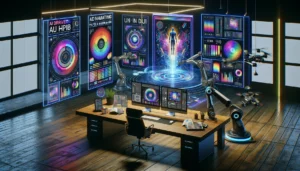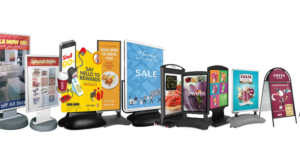A study of some of the world’s most popular brands found that one third of them predominantly use blue in the branding materials, whilst red and greyscale came in at 29% and 28% respectively, heralding them all as popular choices for the world’s most successful brands. 95% of businesses surveyed by Marketo said that they only used one or two colours on their marketing materials, showing that when it comes to brand emphasis, less colour is more.
Tim Fuller, Managing Director of Discount Displays, specialists in providing high-quality materials to businesses to for exhibitions and other events, says, “Colour is statistically shown to be the first thing a customer notices about an exhibition stand, a leaflet, a flyer or another form of promotion and a product’s colour influences 60%-80% of a customer’s purchasing decision. This means that choosing the right colour for a brand is paramount to the success of that brand; the wrong colour schemes can see a company fall by the wayside with inappropriate materials, whilst the right choice of colour can propel a certain product or brand to success.”
Red is a strong, powerful colour that is largely associated with energy and danger. Seeing red stimulates the pituitary gland and makes the viewer breathe more rapidly, so if this is the desired effect of a banner stand or another promotional material, opt for red all the way. Red is popularly used for vehicle, technology and food industries, but those within fields such as air travel and finance tend to veer away from this vibrant shade.
Blue is the colour code for dependability and trustworthiness. Reminiscent of the sky and the ocean, blue puts people at ease, and there are not many industries that tend to shun blue altogether. The clothing and food industries don’t use much blue, but it is popular in almost all others, from finance to agriculture and from health to technology.
Purple makes audiences think of royalty; the rich, sumptuous colour is sophisticated and elegant, and is most commonly used to invoke nostalgia, a sense of status, mystery or spirituality. Purple is unpopular in energy and agricultural marketing, but can be used everywhere else.
Green: the colour of money, and also the colour of nature. This shade is one of the most versatile in branding terms, and it can be used in a great variety of different contexts. Whilst unpopular with fashion (it doesn’t suit everyone) and vehicles (not very nature-friendly), green is great for everything from food to finance.




